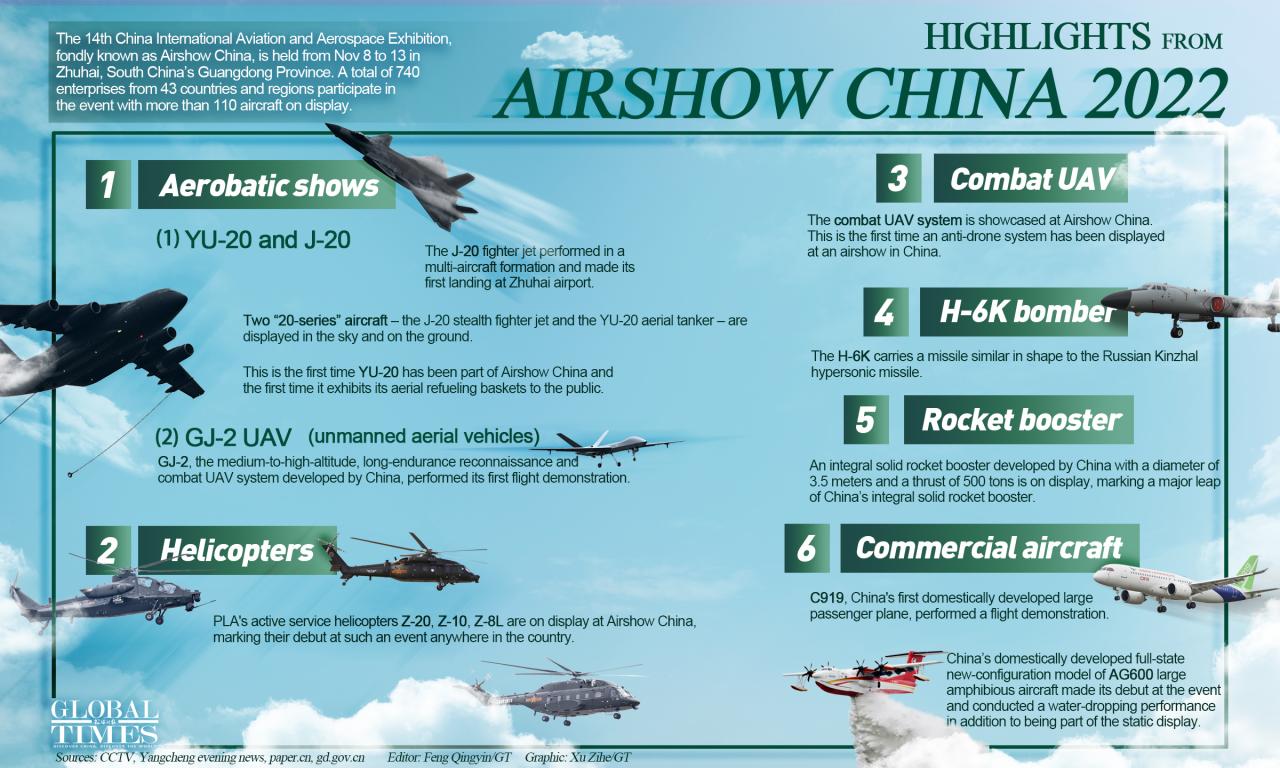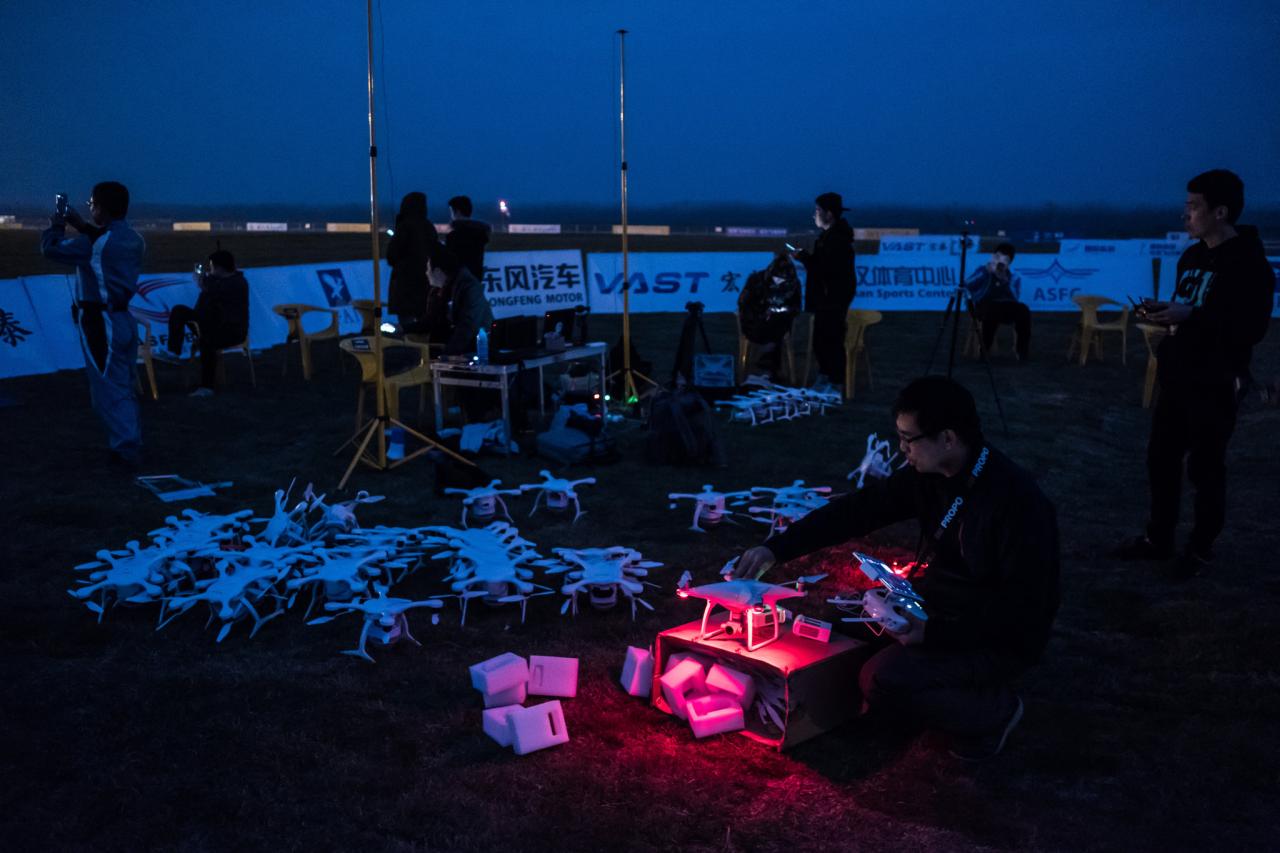China Drone Show 2049 paints a vivid picture of a future where breathtaking aerial displays are commonplace. Imagine massive, coordinated swarms of drones painting intricate light shows across the night sky, transforming cityscapes into canvases of vibrant, moving art. This isn’t just about entertainment; we’ll explore how advancements in Chinese drone technology, coupled with societal shifts, will shape this futuristic spectacle, influencing everything from tourism and cultural expression to economic growth and even environmental concerns.
We’ll delve into the projected technological leaps in autonomy, payload capacity, and AI integration of Chinese drones by 2049. We’ll also examine the potential societal impact, exploring the ethical considerations and economic implications of these dazzling drone shows, and analyzing the security and regulatory measures needed to ensure safe and responsible deployment. Get ready for a fascinating look at the future of aerial entertainment and technological innovation in China.
Technological Advancements in Chinese Drone Technology by 2049
By 2049, China’s drone technology is projected to experience significant advancements, surpassing current capabilities in several key areas. This progress will be driven by substantial investments in research and development, coupled with a rapidly expanding domestic market and a focus on technological innovation.
Projected Advancements in Drone Technology
Significant improvements are anticipated in autonomy, enabling drones to perform complex tasks with minimal human intervention. Payload capacity will likely increase dramatically, allowing for the transportation of heavier goods and equipment. Flight times will extend considerably, facilitated by advancements in battery technology and more efficient propulsion systems. AI integration will be pervasive, enhancing decision-making capabilities, navigation precision, and object recognition.
For instance, swarm technologies, where multiple drones operate collaboratively, will likely be refined, leading to complex, coordinated maneuvers.
Comparison with Other Leading Nations
While the US and other nations are also making strides in drone technology, China’s projected advancements may lead in certain areas, particularly in swarm technology and AI integration for civilian applications. However, Western nations might retain an edge in specific military applications due to different regulatory environments and research priorities. The competition will likely spur innovation globally.
Hypothetical Scenario: Advanced Drone Application in 2049
Imagine a scenario where a swarm of advanced Chinese drones autonomously conducts precision infrastructure inspections across a vast, mountainous region. These drones, equipped with advanced sensors and AI, identify structural weaknesses in bridges and power lines, relaying data in real-time to engineers for immediate remediation. This hypothetical scenario showcases the potential of advanced drone technology for efficient infrastructure management and disaster preparedness.
Key Technological Milestones in Chinese Drone Development (2024-2049)

| Year | Autonomy Level | Payload Capacity (kg) | Flight Time (hours) |
|---|---|---|---|
| 2029 | High-level autonomy in controlled environments | 50-100 | 4-6 |
| 2034 | Increased autonomy in complex, dynamic environments | 100-200 | 8-12 |
| 2039 | Near-complete autonomy with robust AI integration | 200-500 | 12-24 |
| 2049 | Fully autonomous operation with advanced swarm capabilities | >500 | >24 |
Societal Impact of Drone Shows in China by 2049
By 2049, large-scale drone light shows will likely be a ubiquitous form of entertainment and cultural expression in China. Their impact will extend beyond simple spectacle, influencing tourism, public education, and even social messaging.
Imagine the scale of a China drone show in 2049 – thousands of drones choreographing breathtaking displays! But to pull off something that ambitious, you need solid regulations. Think about how different that might be compared to navigating the newly updated new drone rules Canada has put in place. These regulations could influence international drone standards, possibly even impacting the tech used in a future China drone show.
Drone Shows Integrated into Cultural Events
Drone shows will be seamlessly integrated into major Chinese festivals and celebrations like the Lunar New Year, National Day, and various regional festivities. These displays will become integral parts of these events, enhancing the visual spectacle and cultural narrative. Imagine coordinated drone formations depicting historical scenes or mythical creatures, creating immersive and unforgettable experiences.
Innovative Uses for Public Education and Social Messaging

Drone shows will evolve beyond entertainment. They can be used to educate the public about scientific concepts, historical events, or environmental issues. Imagine a drone show illustrating the impact of climate change or the importance of environmental conservation. Furthermore, drone shows can be employed for impactful social messaging campaigns, promoting positive social values or raising awareness about important societal issues.
Ethical Considerations Surrounding Widespread Use of Drone Shows
- Privacy concerns regarding data collection by drones during shows.
- Potential for light pollution and its impact on nocturnal ecosystems.
- Safety regulations and the prevention of accidents during large-scale deployments.
- The equitable distribution of resources and opportunities related to drone show technology.
- The potential for misuse of drone technology in the context of these shows.
Economic Implications of the Drone Industry in China by 2049
The Chinese drone industry is poised for exponential growth by 2049, significantly contributing to the nation’s GDP. This growth will be driven by both civilian and military applications, fostering innovation and job creation across various sectors.
Forecast of Economic Contribution to China’s GDP
By 2049, the drone industry could contribute several percentage points to China’s GDP, driven by manufacturing, research and development, and the creation of numerous ancillary industries. This estimate is based on the current rapid growth trajectory of the industry and the increasing demand for drone-related services and products.
Key Economic Drivers and Challenges
Key drivers include government support for technological advancement, the vast domestic market, and increasing demand across various sectors, such as logistics, agriculture, and infrastructure. Challenges include maintaining technological leadership in the face of global competition, ensuring safety and regulatory compliance, and addressing potential environmental concerns.
Economic Impact of Drone Shows Compared to Other Applications
While drone shows contribute to the overall economic growth through tourism and entertainment, their economic impact is relatively smaller compared to other applications like logistics, agriculture, and surveillance. However, the economic impact of drone shows is likely to grow as the technology becomes more sophisticated and affordable.
Projected Growth Trajectory of the Chinese Drone Industry
A visual representation would show a steep upward curve, starting from the current growth rate and accelerating exponentially until 2049. The curve would reflect the rapid expansion of the industry, driven by technological advancements, government support, and increasing market demand. The curve would likely flatten slightly towards the end, reflecting the natural maturation of any industry, but still showing a substantial overall increase.
Thinking about the ambitious China Drone Show 2049? It’s a long-term vision, but to get a sense of the current tech landscape, check out the china drone show 2027 website. Seeing what’s happening in 2027 will give you a better idea of the advancements needed to reach the goals set for 2049. So, start planning now for the future of drone technology in China!
Security and Regulatory Aspects of Drone Shows in China by 2049
The increasing scale and sophistication of drone shows present both opportunities and challenges regarding security and regulation. A robust regulatory framework is crucial to ensure safe and responsible use of this technology.
Potential Security Concerns
Potential security concerns include the possibility of malicious actors hijacking drones to disrupt shows or cause harm, or using drone shows as a cover for other illicit activities. The vulnerability of drone communication systems to hacking also poses a significant security risk. This necessitates the development of robust cybersecurity measures and strict operational protocols.
Likely Regulatory Framework
By 2049, China will likely have a comprehensive regulatory framework governing drone shows, including stringent airspace management protocols, strict safety standards for drone operation, and rigorous licensing requirements for drone operators. These regulations will likely incorporate advanced technologies for drone identification and tracking to enhance security and prevent misuse.
Comparison with Other Countries’ Regulatory Approaches
China’s regulatory approach will likely be more centralized and stringent compared to some Western countries, reflecting the government’s emphasis on maintaining social order and national security. However, it will also need to balance these concerns with the need to foster innovation and economic growth in the drone industry.
Mitigation of Security Threats
Security threats can be mitigated through technological advancements such as advanced encryption techniques, drone anti-jamming technology, and secure communication protocols. Strong regulatory oversight, including robust licensing and certification procedures, along with stringent penalties for violations, will also play a vital role.
Environmental Considerations of Large-Scale Drone Shows: China Drone Show 2049

While visually stunning, large-scale drone shows have potential environmental impacts that require careful consideration and mitigation strategies.
Potential Environmental Impacts
The environmental impacts include energy consumption from batteries, noise pollution from drone motors, and the potential for accidents involving drone crashes or malfunctions. Light pollution from drone displays can also disrupt nocturnal ecosystems and wildlife.
Mitigation Strategies
Mitigation strategies include using more energy-efficient batteries and propulsion systems, optimizing flight patterns to minimize noise pollution, and implementing robust safety protocols to prevent accidents. Minimizing light pollution through careful selection of display times and light intensity is also crucial.
Comparison with Other Forms of Public Entertainment
Compared to other forms of large-scale public entertainment like fireworks displays, drone shows have the potential to be more environmentally friendly. Fireworks produce significant air pollution, while drone shows primarily generate noise and light pollution, which are more easily mitigated.
Environmental Benefits and Drawbacks of Drone Shows, China drone show 2049
| Aspect | Benefit | Drawback |
|---|---|---|
| Energy Consumption | Potential for use of renewable energy sources | High energy demand per show |
| Noise Pollution | Relatively lower noise compared to fireworks | Noise can still be disruptive |
| Air Pollution | No direct air pollution | Indirect pollution from manufacturing and transportation |
| Light Pollution | Potentially lower impact than some other light shows | Can still disrupt nocturnal ecosystems |
Final Summary
By 2049, China’s drone shows will likely be a defining feature of its cultural landscape, a testament to technological prowess and a powerful tool for entertainment, education, and even social commentary. The economic impact will be significant, but responsible development, addressing security concerns and environmental impact, will be crucial for ensuring a future where these spectacular displays benefit all of society.
Planning a China drone show for 2049? That’s ambitious! To get some ideas, check out the scale and technology showcased at a similar event, the shanghai drone show 2040 , for a glimpse into the future. Seeing what Shanghai pulled off in 2040 will give you a solid base to build your 2049 China drone show upon – think bigger, bolder, and even more spectacular!
The journey to 2049 will involve navigating technological advancements, societal shifts, and regulatory frameworks, promising a fascinating evolution of drone technology and its integration into daily life.
Questions Often Asked
What types of security risks might large-scale drone shows pose?
Potential risks include unauthorized access or hacking, causing drones to malfunction or be used for malicious purposes, such as surveillance or attacks. Also, drone failures could cause accidents or property damage.
How might China regulate drone shows to ensure safety?
Expect strict airspace management, licensing requirements for operators, mandatory safety protocols, and potentially geofencing technology to restrict drone flight paths and prevent unauthorized access.
What environmental concerns might be associated with large drone shows?
Energy consumption from numerous drones, noise pollution, and the potential for accidents or drone debris impacting the environment are key concerns.
What are some innovative uses for drone shows beyond entertainment?
Drone shows could be used for educational purposes, creating interactive displays about history or science. They could also be used for large-scale public announcements or emergency alerts.
